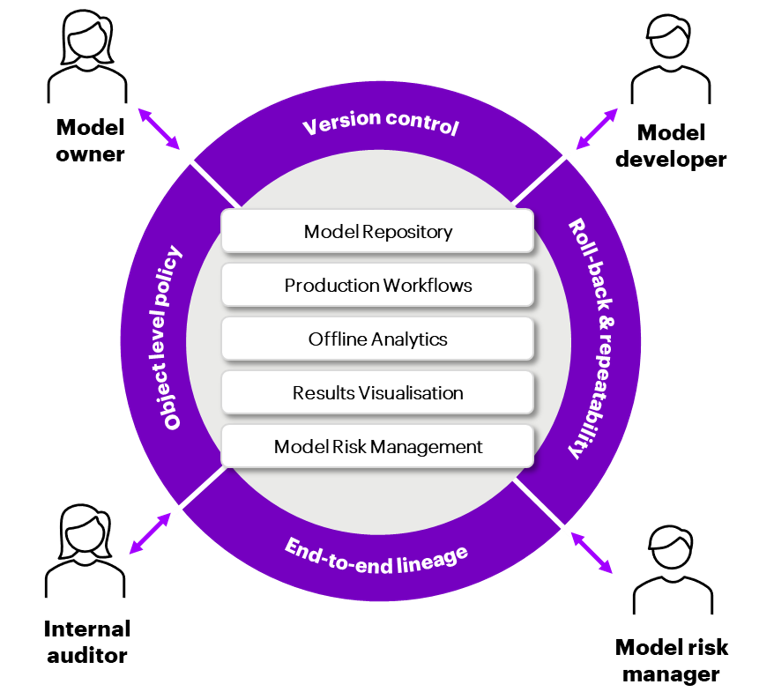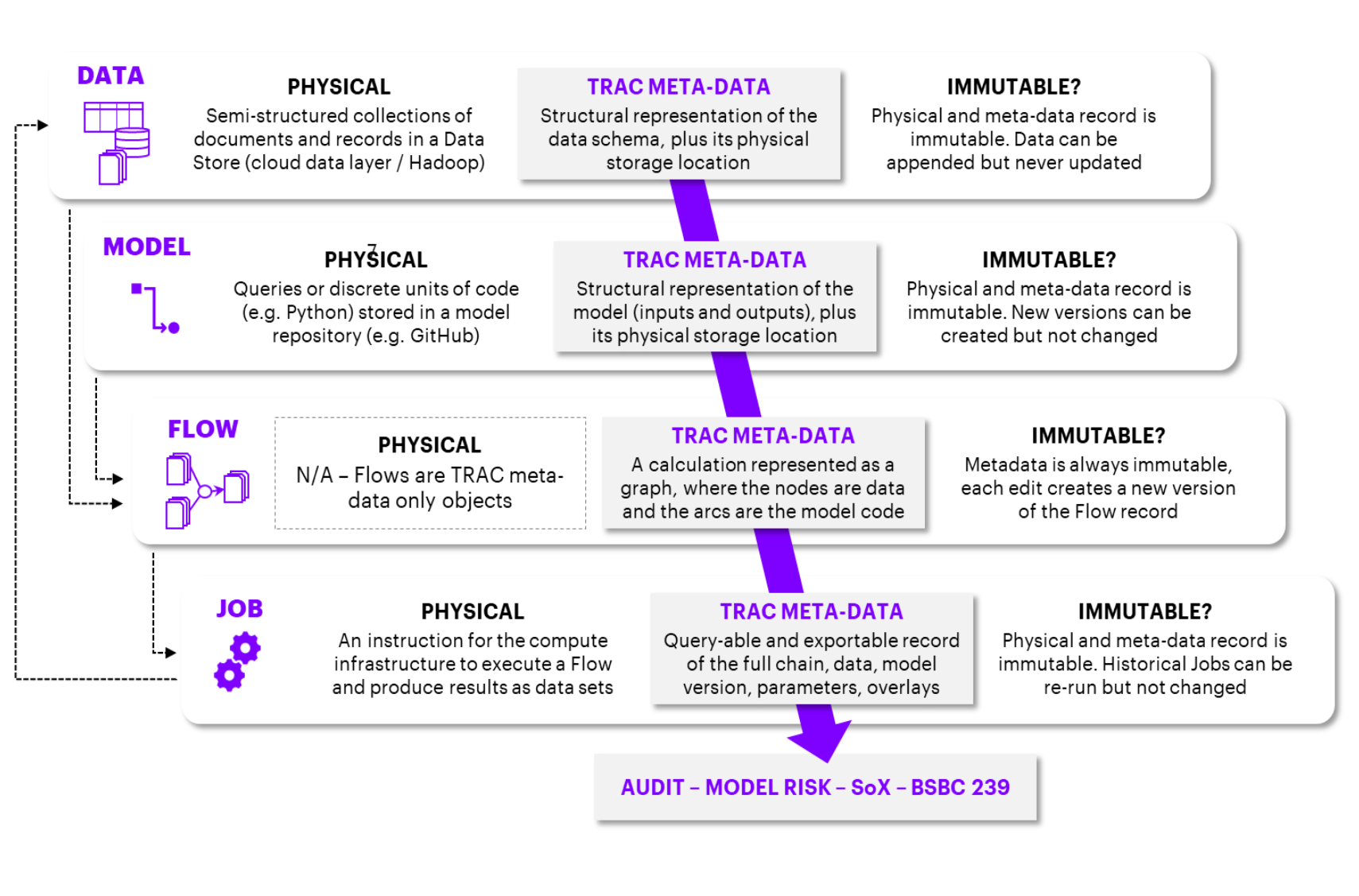Introduction to TRAC¶
TRAC is a new type of analytics solution designed to work with cloud and big data technologies to solve the challenge of managing complex and highly governed models across their lifecycle for multiple personas.

What is TRAC?
A model management and orchestration solution which is;
Built around a structural meta-data model
Designed to manage complex, critical, highly governed models
Open source and free of any licence costs
Compatible with all major cloud providers and Hadoop
What is different about TRAC?
Integrates the model inventory, code repository and model execution
Systemizes the model execution process, including overlays and sign-off
Comprehensive version history and audit trail (BCBS239, SoX)
Perfect roll-back and repeatability of any historical calculation
Easy to configure what-if and champion-challenger analysis
Flexible system for policy controls and model risk reporting
Structured meta-data model¶
TRAC is built around a structural metadata model which, combined with the immutability of the underlying objects, gives users a full version history, lineage, roll-back and repeatability.

The ‘No-IT’ operating model¶
TRAC empowers model developers and model users to self-serve within a controlled environment, eliminating the need for a platform support team to manage configuration and deployments at the application level.
Zero-risk deployment |
TRAC’s built-in repeatability guarantee allows new models, data and overlays to be loaded and executed against production data at any time, with zero change risk, so the traditional separation between user and platform team is redundant. |
|
Self-generating UI |
Models and data loaded onto the platform are immediately available to configure and run in the user interface. The meta-data associated with model objects describes their parameters and inputs, so the UI can be generated dynamically. |
|
Automated documentation |
Model implementation, data lineage and audit documentation is automated from the TRAC meta-data, eliminating the need for labour-intensive paper production exercises by a platform support team. |
|
User-defined controls |
A configurable policy service enforces tagging of production (i.e. signed-off) assets, preventing confusion with ad-hoc, experimental or challenger runs. This governs user permissions and the allocation of platform resources. |
|
Seamless route to live |
In TRAC, everything is always live. The production model is controlled by sign-off policies, to enforce constrains and record evidence before applying the “production” tag. The sign-off process has full point-in-time history and every version remains available for rollback. |
Compatibility and deployment¶
TRAC uses open standards to provide a familiar developer experience and several easy options for integration.

Open standards
Built on open standards for maximum compatibility and minimum lock-in
Focus on developer experience with a “batteries included” philosophy, so developers can get going right away
Designed for integration with complex data landscapes; open standards are best, integration with bespoke components is also possible
Deployment options
Using established patterns that your organization already has in place will simplify deployment and maintenance
Cloud and tooling vendors are willing to produce deployment templates for TRAC on their platforms (some already have)!
Common tools such as Terraform or Ansible can be set up quickly if there is nothing else in place